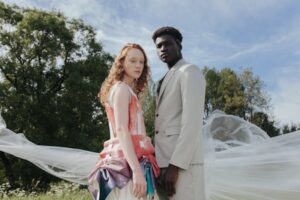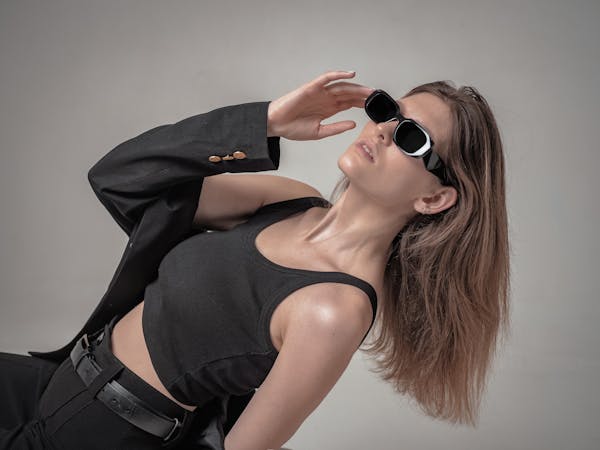The Bold World of Avant-Garde Designers’ Fashio
Introduction to Avant-Garde Fashion
What Does “Avant-Garde” Mean in Fashion?
Avant-garde fashion is the beating heart of boundary-pushing style. It’s bold, rebellious, and unapologetically creative. The term “avant-garde” comes from the French military, meaning “advance guard”—those who lead the charge into uncharted territory. In fashion, it refers to visionary designers who dare to defy convention and create garments that are more than just clothes—they’re statements, sculptures, and sometimes even provocations.
Origins of the Avant-Garde Movement
The avant-garde movement didn’t start with fashion—it began with art. Think Dadaism, Surrealism, and Modernism. These art movements broke the rules and influenced everything from literature to design. Eventually, fashion caught up. By the 1960s and 70s, designers began to challenge traditional silhouettes and expectations, introducing abstract forms, new materials, and radical ideas that sparked what we now call avant-garde fashion.

Defining Features of Avant-Garde Fashion
Experimental Silhouettes
Forget symmetry, balance, and form-fitting lines. Avant-garde fashion embraces exaggerated shapes, jagged hems, oversized sleeves, and asymmetry that gives garments an unpredictable charm. It’s less about flattering the body and more about challenging how we see it.
Unconventional Materials
Why stick to silk and cotton when you can use metal, vinyl, wood, or even LED lights? Avant-garde designers are known for their fearless use of unconventional materials that often blur the line between fashion and fine art.

Concept Over Commercialism
At its core, avant-garde fashion isn’t about what sells. It’s about storytelling, making a point, and shaking things up. These pieces may not be practical, but they are powerful. Each one delivers a message—often deeply personal or political.

Iconic Avant-Garde Designers Who Shaped the Industry
Rei Kawakubo—The Master of Deconstruction
The founder of Comme des Garçons, Rei Kawakubo, has redefined what beauty means in fashion. Her garments defy traditional structure, featuring lumps, holes, and uneven silhouettes that make you question what fashion is supposed to be.

Yohji Yamamoto—The Poet of Black
Yamamoto is renowned for his monochrome palettes and flowing, oversized designs. His work is poetic, minimalistic, and philosophical. Each collection tells a subtle, emotional story through the use of draped black fabrics and gender-neutral silhouettes.
Iris van Herpen—Fashion Meets Technology
Iris van Herpen merges science, technology, and fashion in jaw-dropping ways. Using 3D printing, laser cutting, and experimental textiles, she crafts futuristic designs that look like they belong in a sci-fi film. Her creations are living proof that fashion can be forward-thinking and fantastical at the same time.

Martin Margiela—The Invisible Designer
Margiela is known for his anonymous approach—he never took a bow after shows and let his designs speak for themselves. He introduced inside-out garments, repurposed materials, and conceptual designs that are still influencing fashion today.
Rick Owens—Dark Glamour Redefined
Rick Owens’ designs blend a gothic edge with modern minimalism. His signature look—draped layers, muted tones, and bold structure—creates a striking presence that has made him a cult favorite in the avant-garde scene.

How Avant-Garde Fashion Challenges Norms
Rejecting Fast Fashion Trends
Avant-garde designers scoff at fleeting trends. They create from a place of conviction, not consumer demand. Their work often exists outside the typical fashion calendar, standing as timeless testaments to creativity.

The Art vs. Wearability Debate
Is it clothing, or is it art? Avant-garde fashion constantly toes this line. It’s not always about what’s wearable—it’s about what’s expressive. These designs make you feel something, and that’s what makes them so unforgettable.
Avant-Garde on the Runway
Theatrics and Performance Art
Avant-garde runways aren’t just shows—they’re performances. Models dance, scream, walk in slow motion, or even stand still. The goal is to create an emotional impact, turning fashion shows into full-blown artistic expressions.

Breaking the Boundaries of Presentation
Some designers skip traditional runways altogether. They choose industrial warehouses, abandoned buildings, or even virtual spaces to showcase their work. The setting becomes part of the message.
Cultural and Social Impact of Avant-Garde Fashion
Gender Fluidity and Body Positivity
Avant-garde fashion embraces diversity in all forms. Designers often cast non-traditional models and design clothes that challenge gender norms. It’s fashion for humans, not just for men or women.

Political and Philosophical Statements
From commenting on climate change to questioning consumerism, avant-garde fashion often carries a deeper meaning. Each piece can be a manifesto stitched into fabric, a wearable protest against societal norms.
Influence on Mainstream Fashion
High Fashion Trickling Down
Many mainstream designers borrow elements from avant-garde icons. You’ll see deconstructed hems, asymmetry, and bold patterns on the high street, thanks to the trailblazing ideas born on avant-garde runways.

Collaborations with High-Street Brands
Avant-garde labels like Comme des Garçons and Maison Margiela have teamed up with retailers like H&M. These partnerships bring high-concept fashion to the masses, allowing more people to experience avant-garde aesthetics.
How to Incorporate Avant-Garde into Everyday Style
Tips for Beginners
You don’t need to go full runway to embrace avant-garde fashion. Start with a statement coat, an asymmetrical skirt, or a dramatic pair of boots. Focus on pieces that reflect your personality and challenge the usual style rules.

Key Wardrobe Pieces
Look for:
- Sculptural jackets
- Oversized trousers
- Layered ensembles
- Bold accessories
- All-black or monochrome palettes
These pieces can transform a basic look into a fashion-forward statement.
The Future of Avant-Garde Fashion
Sustainability and Innovation
Avant-garde designers are often pioneers in sustainable fashion. They experiment with biodegradable fabrics, upcycled materials, and innovative manufacturing processes to reduce their environmental impact.
Digital Fashion and Virtual Runways
With the rise of virtual fashion, avant-garde is evolving again. Designers now explore digital garments that exist only online. These creations are worn by avatars and influencers in the metaverse—pushing the boundaries of fashion even further.

Conclusion
Avant-garde fashion is not just about dressing up—it’s about waking up. It wakes us up to new ideas, alternative perspectives, and the immense power of clothing as a form of communication. These visionary designers aren’t just creating outfits—they’re shaping culture, provoking thought, and building the future of fashion one bold stitch at a time.
Whether you’re an artist at heart, a rebel in spirit, or simply curious, avant-garde fashion offers a world where creativity has no limits. And in today’s copy-paste culture, that’s not just refreshing—it’s revolutionary.
FAQs
What is the main difference between avant-garde and haute couture?
While both are high-end and artistic, avant-garde focuses on conceptual, often unwearable pieces. Haute couture is luxurious, handcrafted, and designed to fit the wearer perfectly, more about craftsmanship than experimentation.
Can anyone wear avant-garde fashion?
Yes! Avant-garde isn’t about fitting in—it’s about standing out. Whether it’s a bold accessory or a dramatic coat, anyone can add avant-garde flair to their style.
Why is avant-garde fashion considered art?
Because it breaks the rules. It’s not just about looking good—it’s about expressing ideas, emotions, and philosophies. It tells stories, makes statements, and challenges norms—just like great art.
How do designers come up with avant-garde ideas?
Many draw inspiration from architecture, science, politics, and personal experiences. It’s often deeply reflective and rooted in emotion, philosophy, or cultural critique.
Is avant-garde fashion practical?
Not always—and that’s okay. It’s designed to inspire, provoke, and lead. While some pieces are wearable, others are meant to be experienced and appreciated like a painting or performance.
